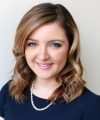More choice—not more money—will fix Saskatchewan schools

Across the province, due to a labour dispute with the Saskatchewan government, until last week members of the Saskatchewan Teachers’ Federation were in “work-to-rule” mode and cancelled all extracurricular activities, field trips and noon hour supervision, leaving parents scrambling.
Missing more formative social activities was the last thing students needed. Let’s not forget this cohort only recently weathered COVID-19 school closures, resulting in at least 15 weeks of shuttered classrooms in Saskatchewan, with research showing historic learning loss and deleterious mental health impacts for youth.
Saskatchewan teachers plan to vote next month on the government’s latest offer, which may settle the dispute. Of course, money remains a central point of contention—even though the Moe government threw more money at government schools in its latest budget, increasing education spending by $247.8 million to $3.3 billion in 2024-25. But a never-ending flow of tax dollars won’t change the fact that government schools are one-size-fits all while children are not.
Consider some recent spending history. From 2012/13 to 2017/18, Saskatchewan was Canada’s highest spender on government public schools, after adjusting for inflation, on a per-student basis. Today, after spending reductions, the province falls just below the Canadian average. Did six years of sky-high spending pay off? No.
According to the Programme for International Student Assessment (PISA) standardized test of 15-year-olds in math, reading and science, from 2012 to 2022, the most recent year of PISA data, Saskatchewan student test scores declined by 38 points in math, 21 points in reading and 22 points in science. For context, PISA characterizes a 20-point drop as roughly one year of lost learning. In other words, in just one decade, which included six years when Saskatchewan spent more per-student than any province on government schools, Saskatchewan students fell roughly two years behind in math and one year behind in reading and science.
High per-student spending did not improve Saskatchewan’s student test scores (which is no surprise given that research shows higher education spending is not associated with higher student test scores). Neither did subsequent years of spending restraint.
Clearly, money isn’t the issue.
The Saskatchewan Teachers’ Federation has also raised the issues of class size and complexity.
Reducing class size is expensive, and the research on its benefits are mixed. While smaller class sizes can be beneficial in the early years, an analysis of the 2015 PISA scores in each province found that provinces with larger class sizes actually had higher student scores in high school. And the highest-performing countries also have some of the largest class sizes—Singapore, the top-scoring country in math and science, averaged eight more students in its high school classes than Canada.
Classroom complexity, however—the proportion of students with exceptional needs, considerable behavioural issues and required learning interventions—remains a real challenge. These students require different things from their classrooms.
But all kids are different in their own way. Yes, there’s a science to learning and best practises including phonics in early reading, memorization in math, and content-rich courses—these pillars should form the basis of a solid provincial curriculum, if one is to be mandated. But different schools fit different kids.
Right next door in Alberta, children have access to tuition-free charter schools that offer unique pedagogical approaches to schooling, with focuses on classical education or STEM. These charter schools—public schools run autonomously by community groups instead of government school boards—also offer emphasis on music or sports, Indigenous culture or rural stewardship. Some charter schools are entirely dedicated to students with mental health challenges, complex learning needs and English as an additional language.
It’s also worth noting that Alberta, which offers more choice in education than any province, leads the country in PISA reading and science scores and is second only to Quebec in math.
The Saskatchewan government already partially funds independent schools, effectively allowing a portion of a family’s tax dollars to follow their child to an independent school. To ramp up innovation in Saskatchewan’s education landscape, the government could expand funding for these alternatives in addition to allowing tuition-free charter schools.
The record is clear—throwing more money at government schools staffed by unionized teachers has not produced good results for Saskatchewan students, unless you measure success by kids missing classroom time or extracurriculars.

